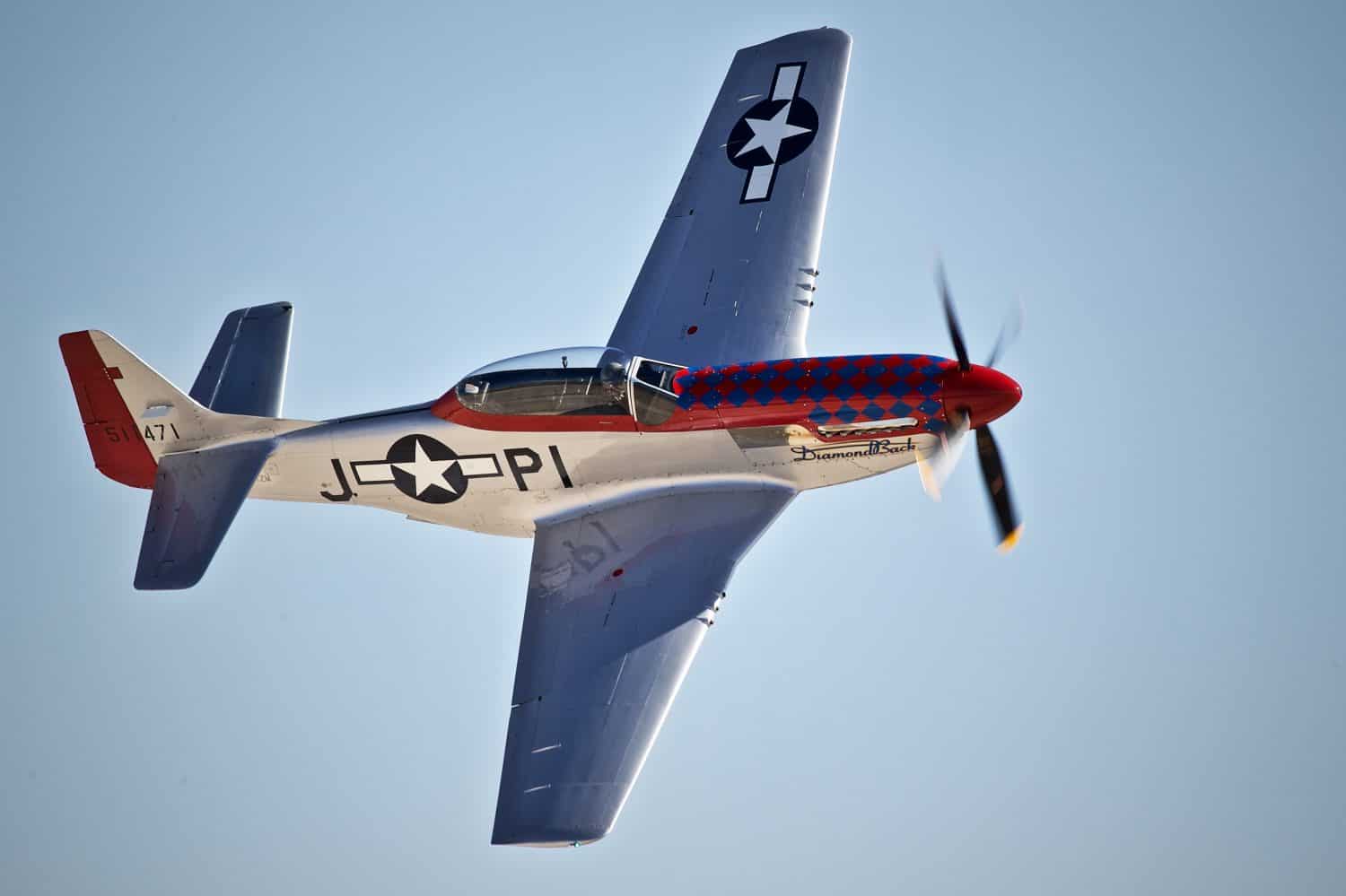
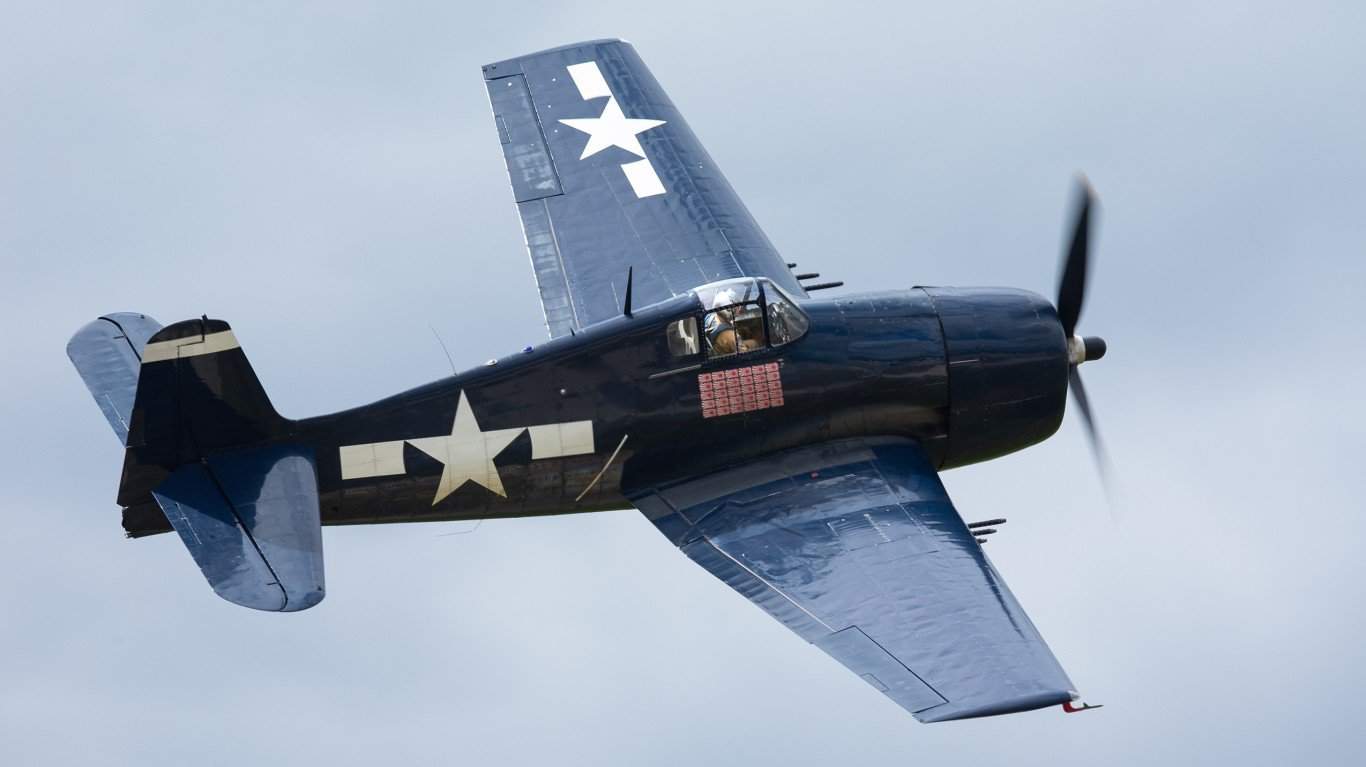
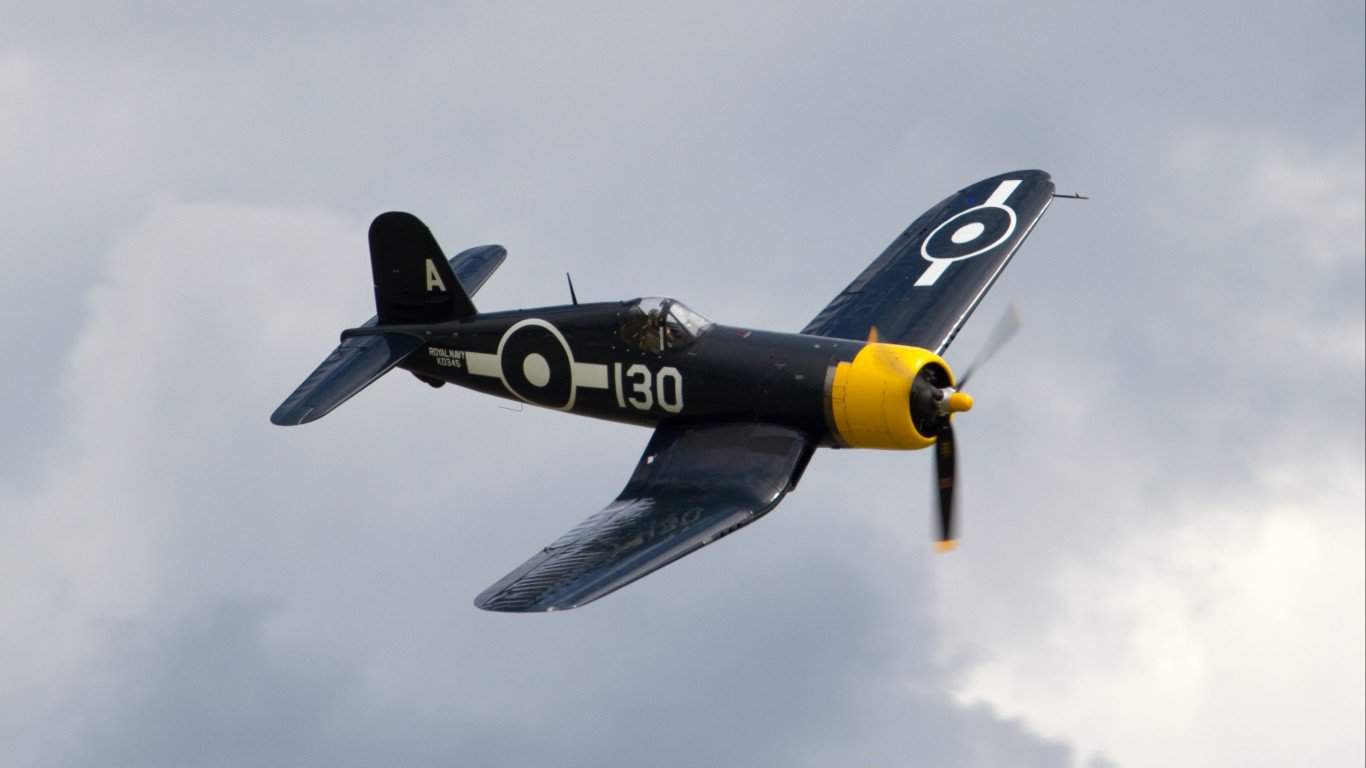
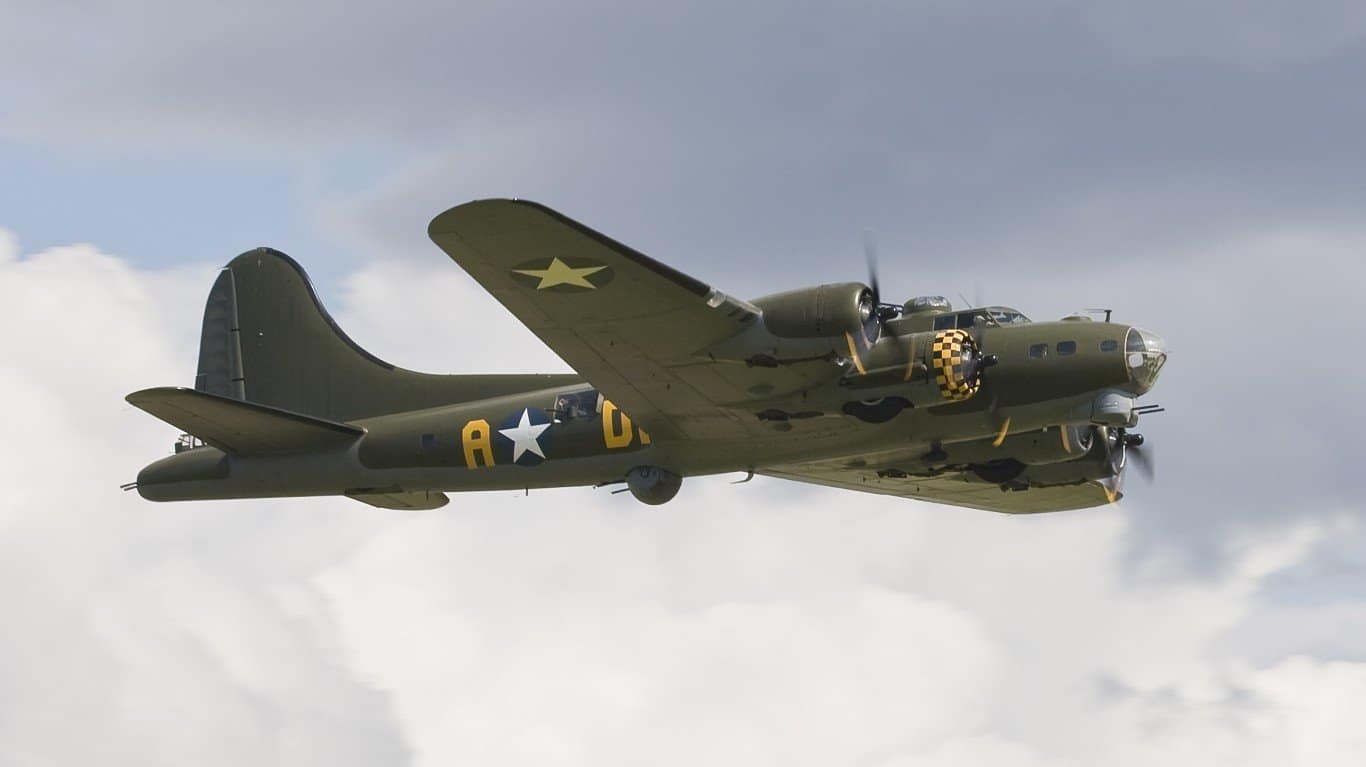
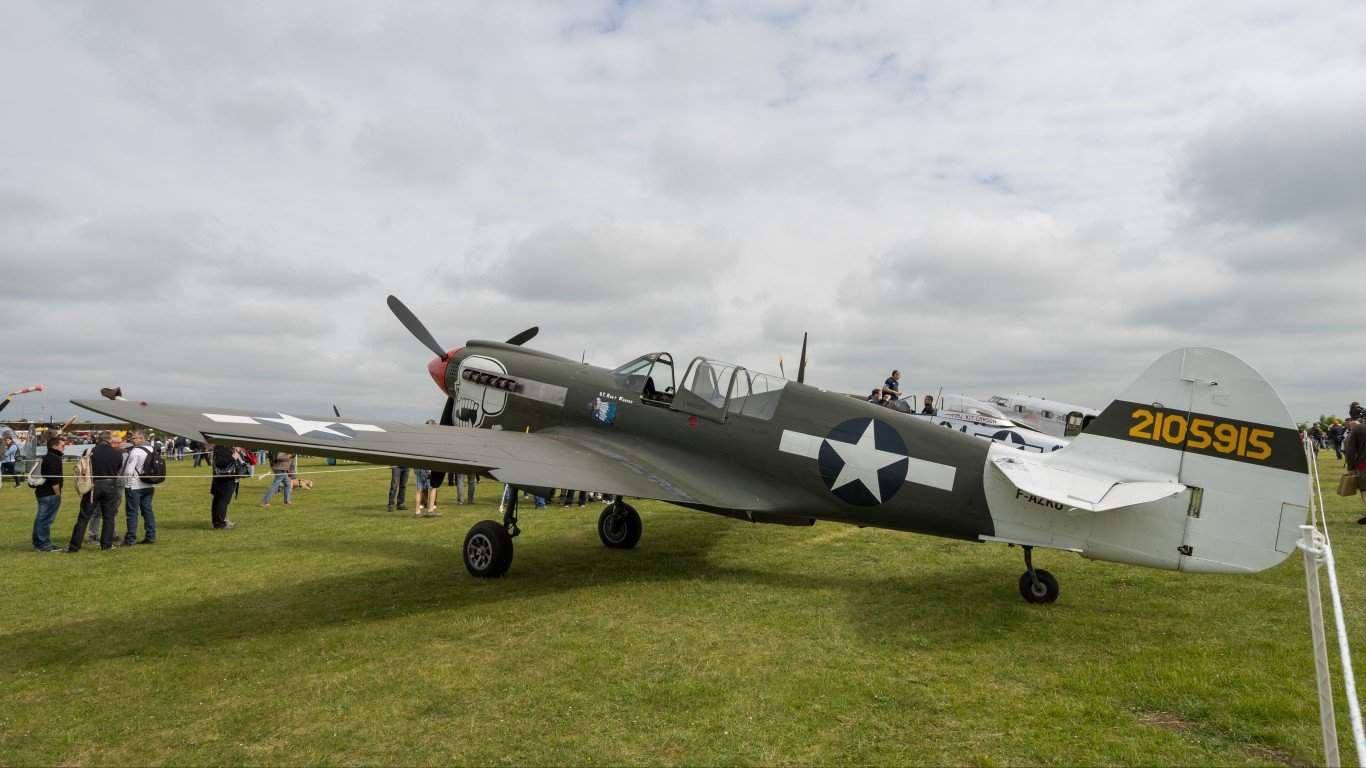

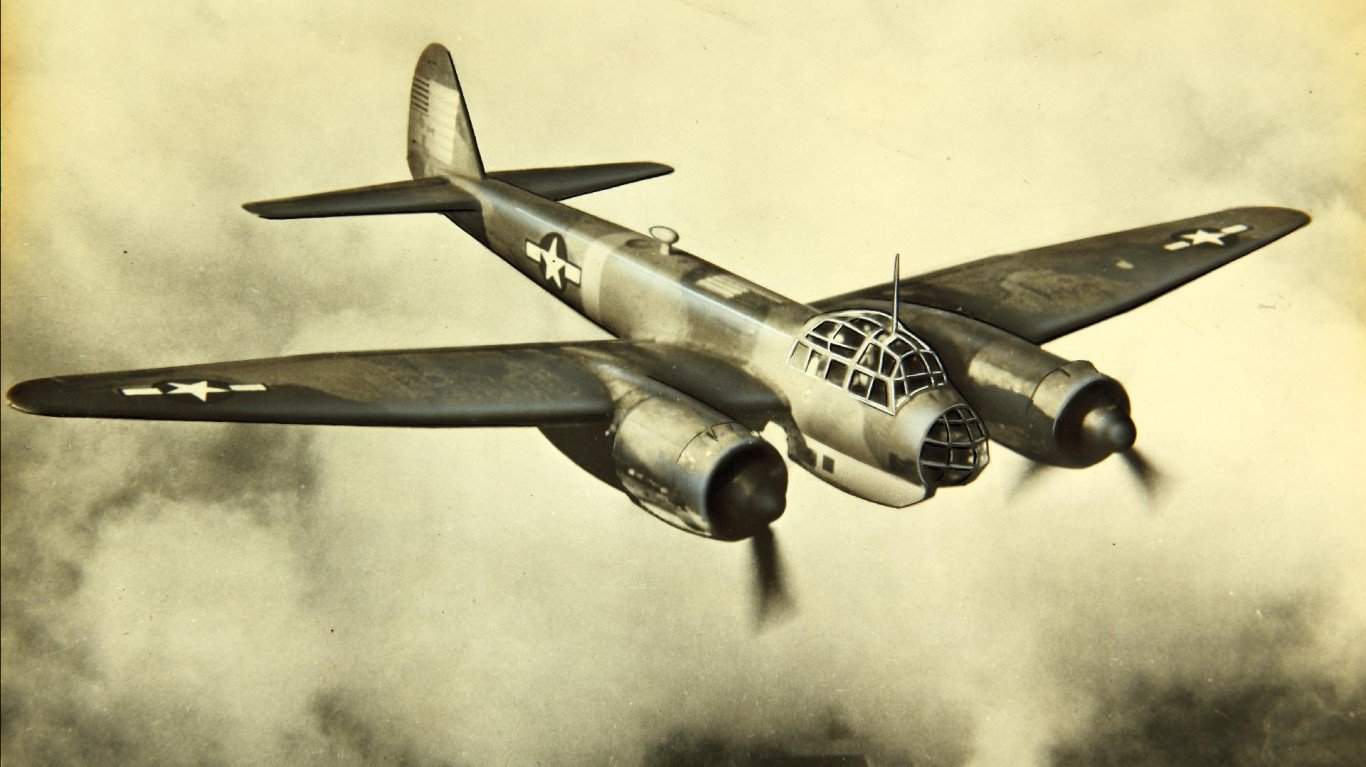
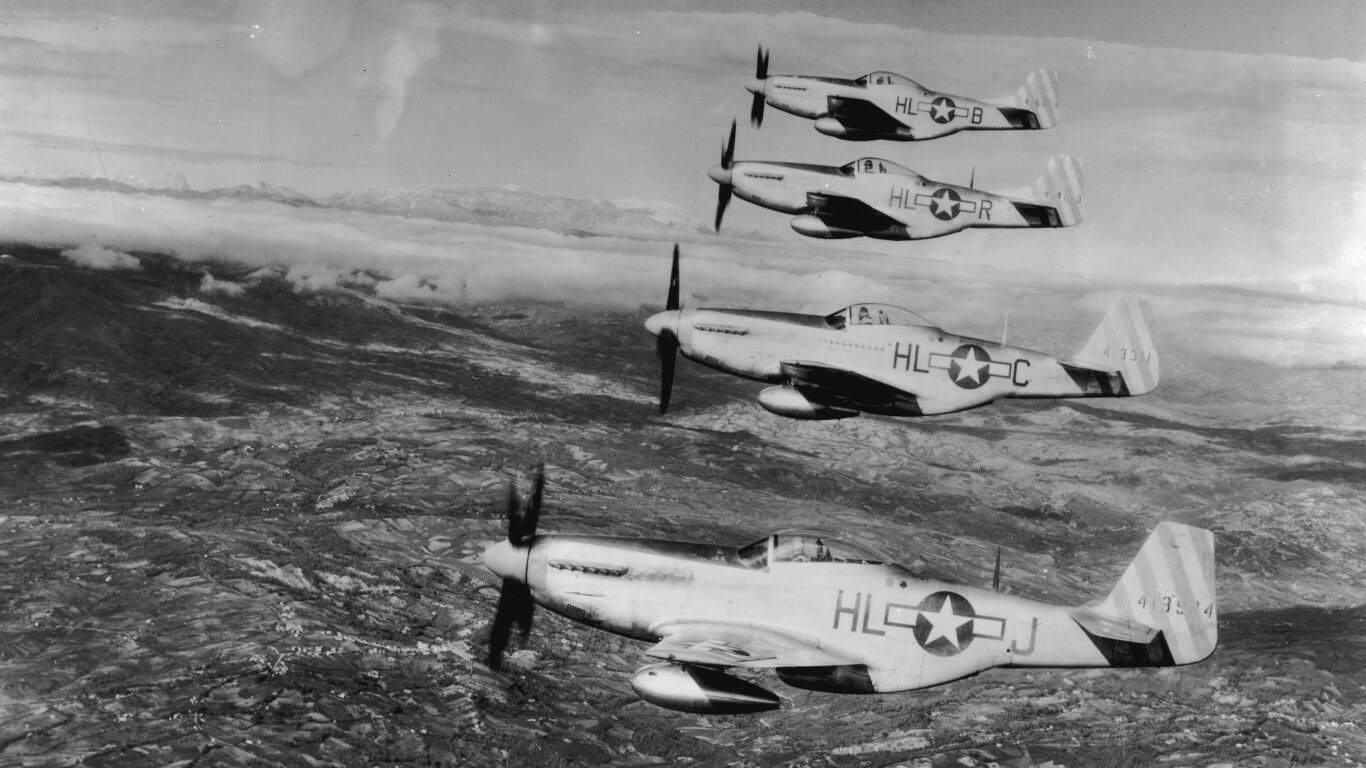
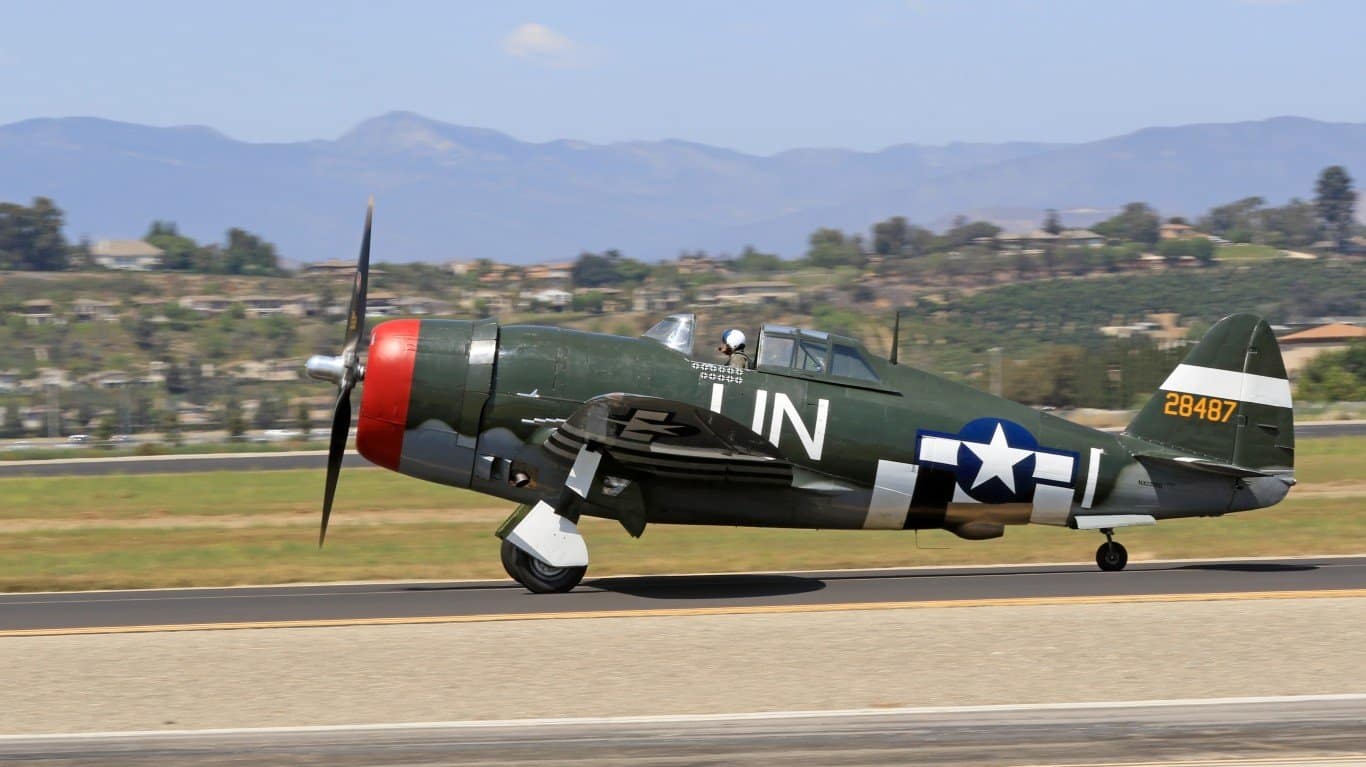
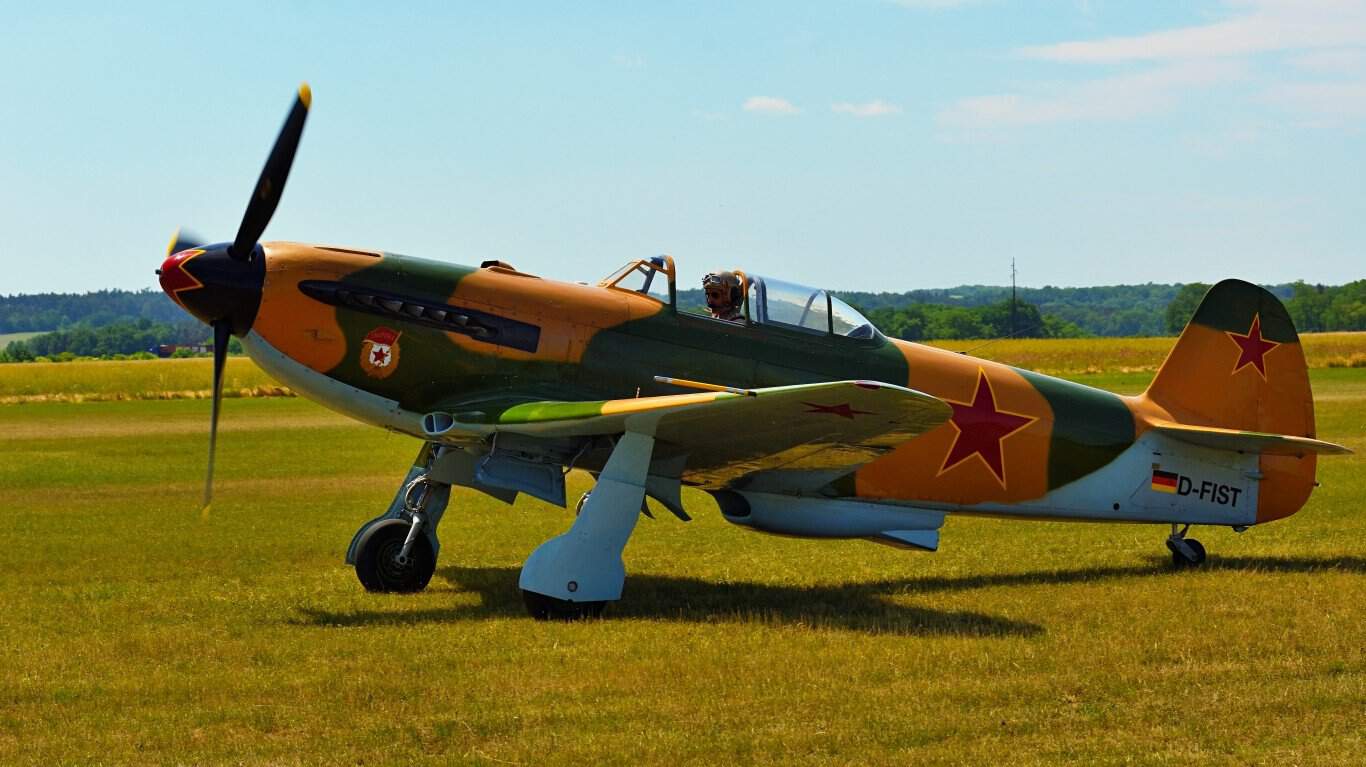
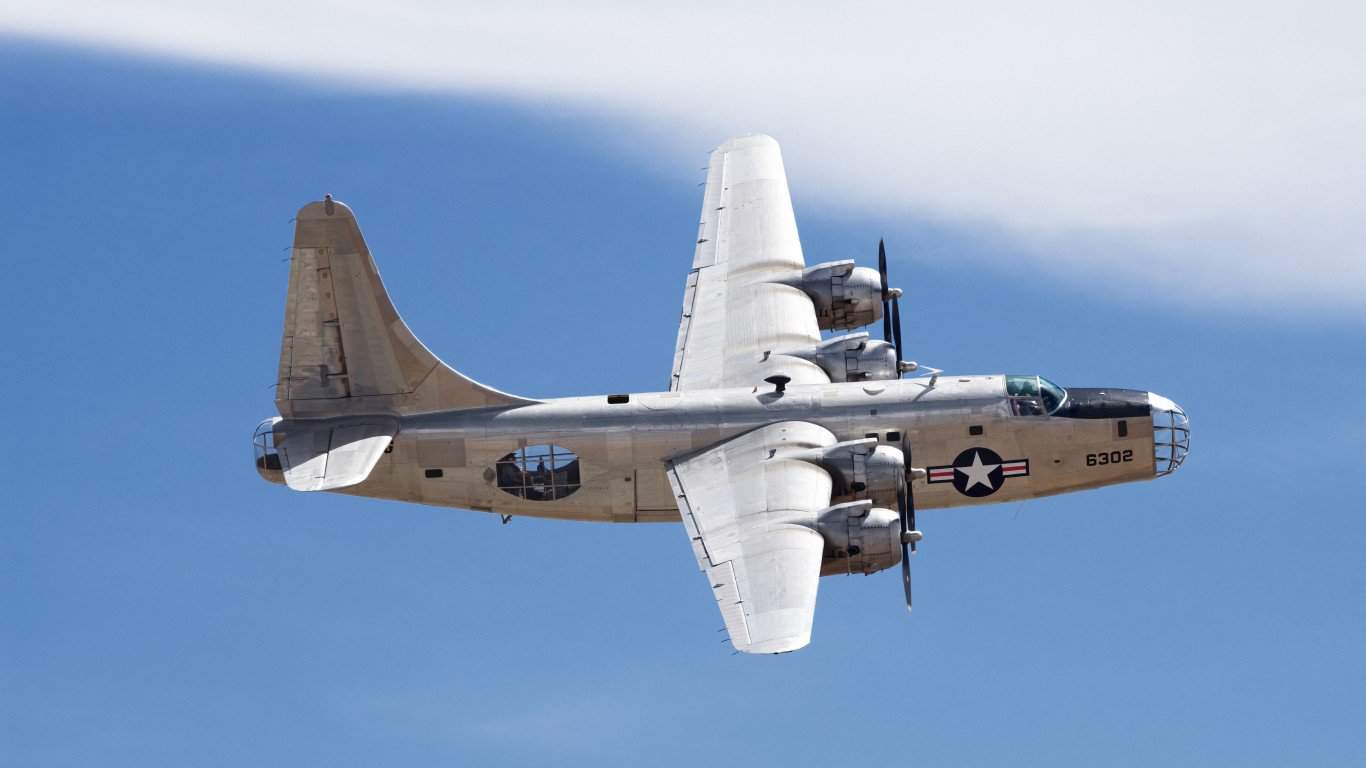
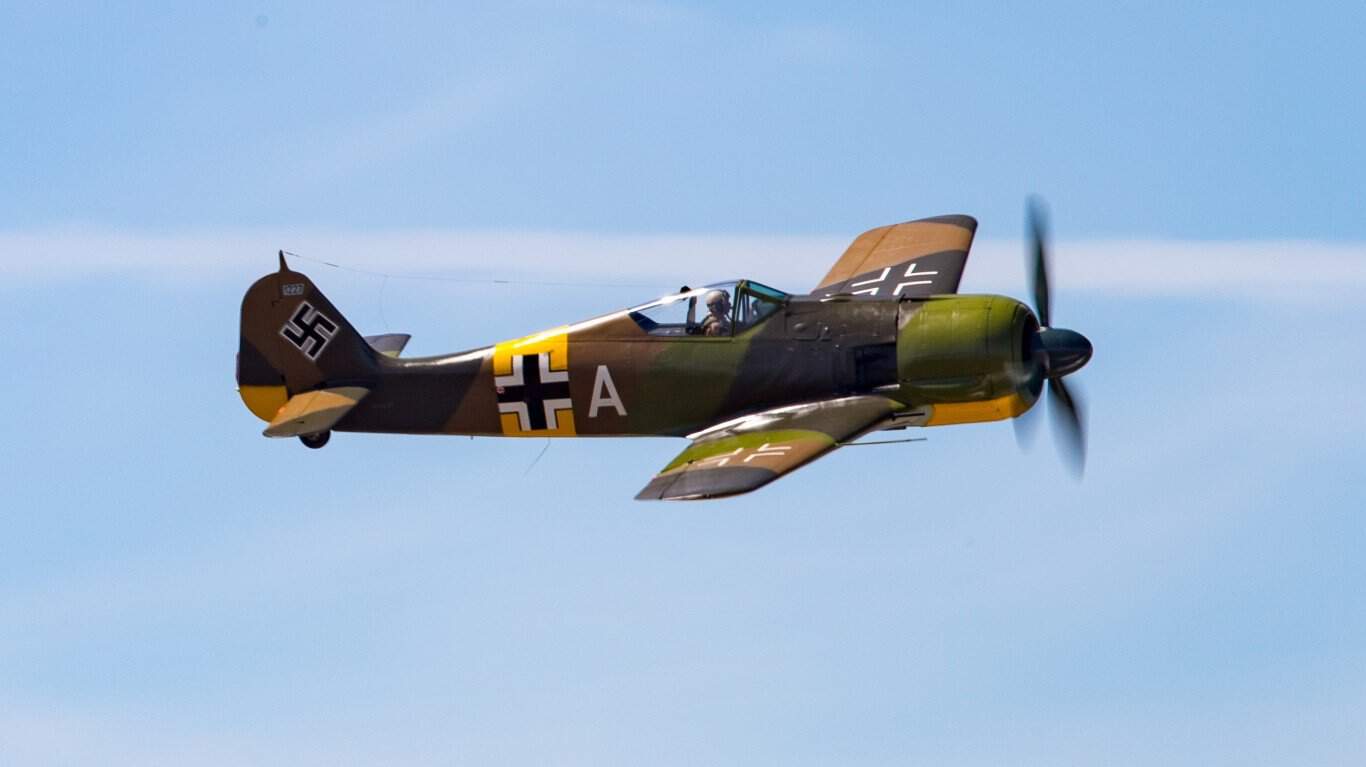
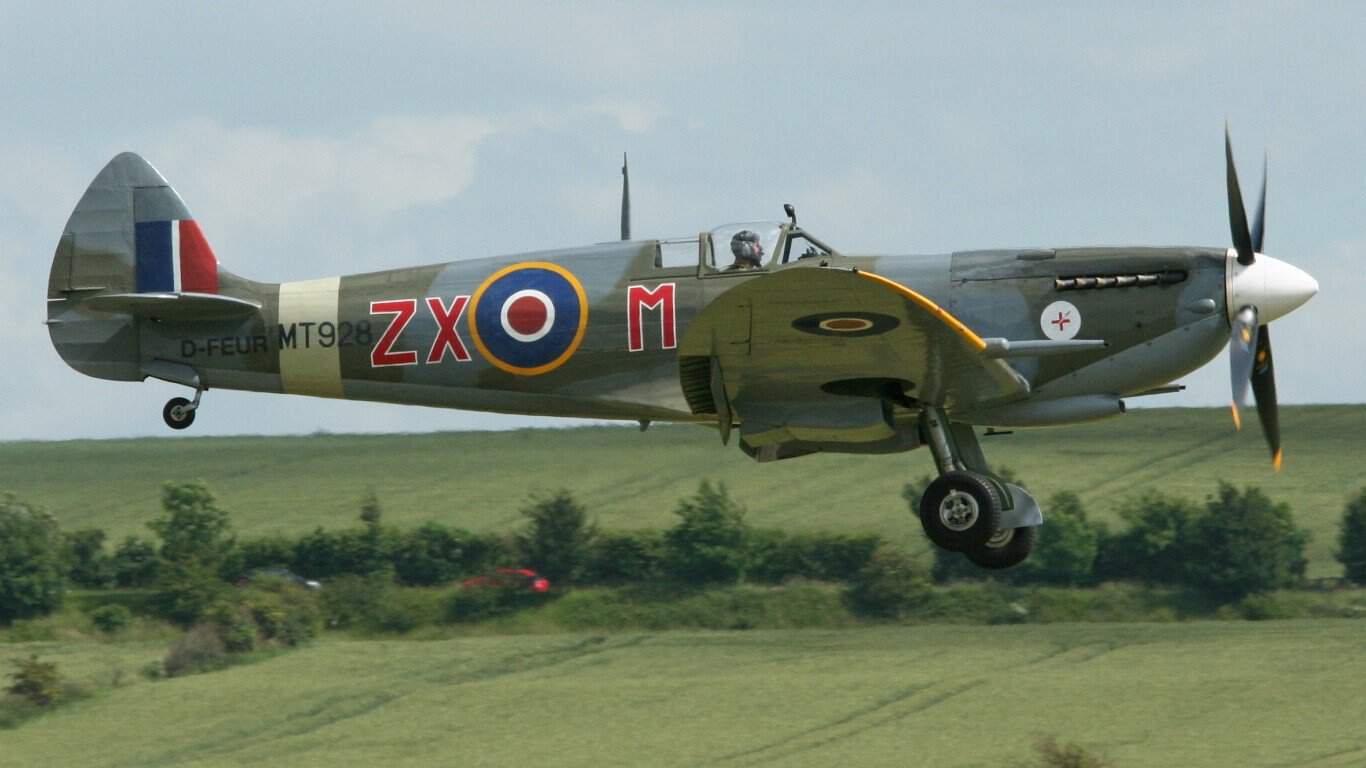
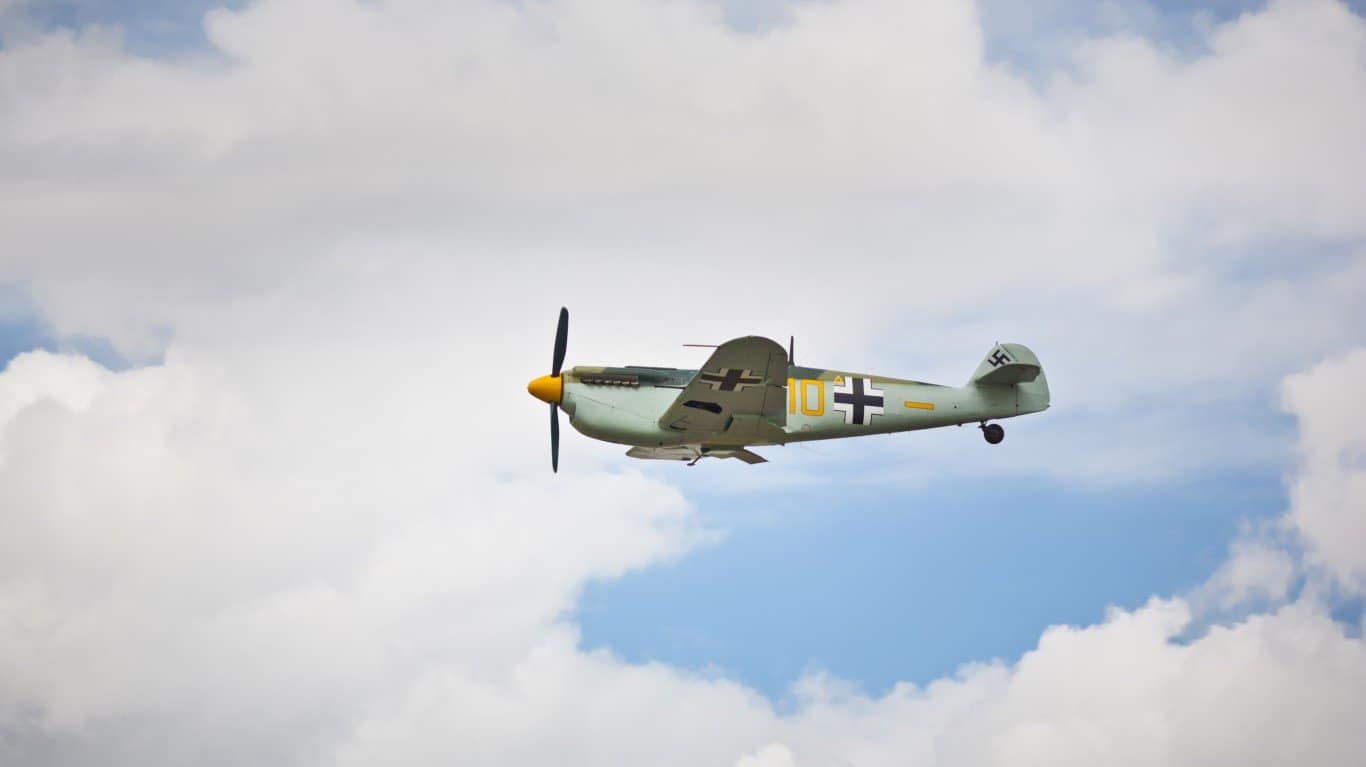
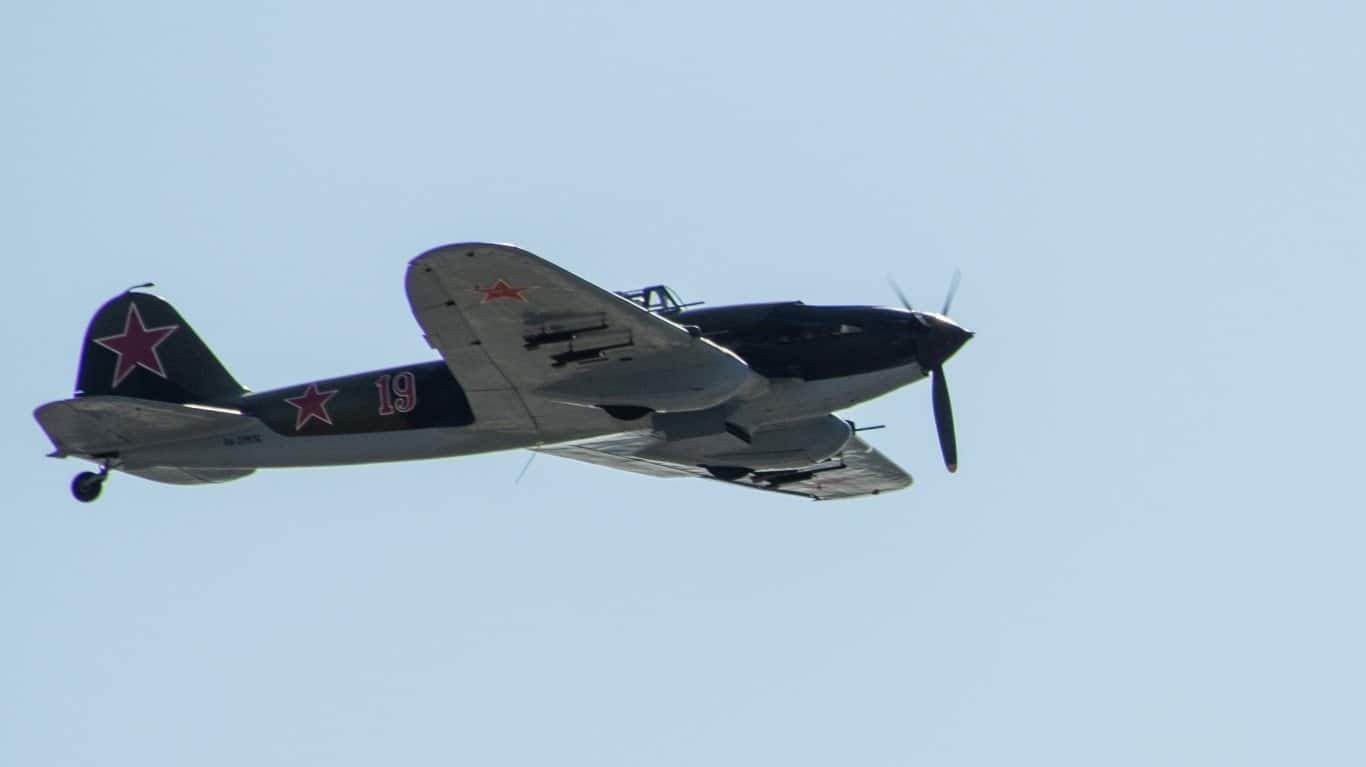
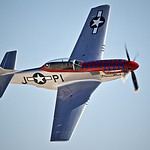
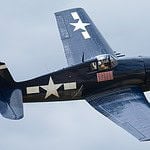
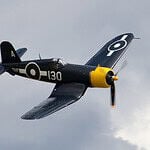
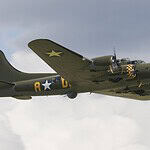
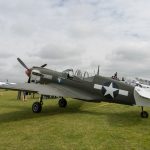
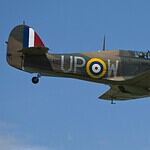
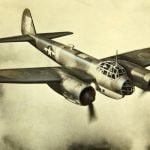
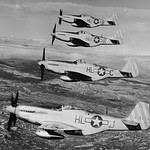
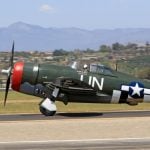
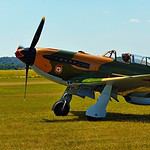
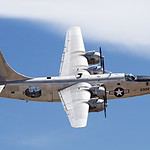
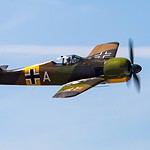
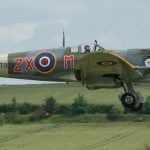
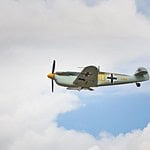
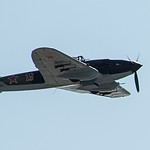
The Soviet Fighter That Swarmed the Skies in WW2
According to the Allies, one of the most critical aspects of winning World War II was establishing air superiority over the Germans. To ensure the ground effort got to Berlin, the air war had to be won by the Allies, which meant producing tens of thousands of planes to counter everything the Axis powers could throw at the Allies.
14. Grumman F6F Hellcat
- WWII production count: 12,275
- Aircraft type: Carrier-based fighter
- Country of origin: United States
The United States manufactured 12,275 Grumman F6F Hellcat fighter planes in one three-year span during the conflict. The Hellcat was a crucial asset in the Pacific Theater, accounting for 75% of the U.S. Navy’s aerial victories in the war. The carrier-based fighter was armed with six .50 caliber machine guns and could transport up to 2,000 pounds of bombs.
13. Vought F4U Corsair
- WWII production count: 12,571
- Aircraft type: Fighter
- Country of origin: United States
The Vought F4U Corsair was a flexible fighter aircraft suitable for land and carrier-based operations. Adopted by U.S. Marines in the Pacific and integrated into British and New Zealand fleets, the Corsair had a maximum payload capacity of 4,000 pounds of bombs or eight 5-inch rockets and featured six .50 caliber machine guns or two 20mm cannons. It had a maximum speed of 453 mph and a range of 900 miles.
12. B-17 Flying Fortress
- WWII production count: 12,692
- Aircraft type: Bomber
- Country of origin: United States
The heavily armored and durable B-17 heavy bomber, known as the Flying Fortress, could withstand multiple hits. Equipped with 10 .50 caliber machine guns and one .30 caliber machine gun, the aircraft could carry up to 4,200 pounds of bombs and had a maximum range of over 3,000 miles. Deployed for daytime air raids over Germany and to target Japanese shipping operations in the Pacific.
11. Curtis P40-Warhawk
- WWII production count: 13,738
- Aircraft type: Fighter
- Country of origin: United States
Manufactured from 1938 to 1944, 13,738 Curtis P40-Warhawk fighter planes were produced. Although technological progress in aviation outpaced the Warhawk by the end of WWII, it held the distinction of being the United States’ premier fighter at the war’s outset. Driven by a 1,150-horsepower engine, the Warhawk featured an 850-mile range and achieved a top speed of 362 mph. Warhawks were armed with six .50 caliber machine guns and the capacity to carry up to 700 pounds of bombs.
10. Hawker Hurricane
- WWII production count: 14,483
- Aircraft type: Fighter
- Country of origin: Great Britain
From 1937 to 1944, nearly 14,500 Hawker Hurricane fighters were produced. The Royal Air Force deployed 32 Hurricane squadrons during the war, contributing to 60% of the destruction of enemy aircraft in the Battle of Britain. The durability of the Hurricane under fire played a key role in its effectiveness. Hurricanes had a top speed of 340 mph and a maximum range of 600 miles.
9. Junkers Ju-88
- WWII production count: 14,676
- Aircraft type: Multi-role
- Country of origin: Germany
During WWII, the Luftwaffe relied heavily on the Junkers Ju-88, a versatile aircraft for bombing raids, combat, and reconnaissance. Despite its recognition as one of the most flexible planes of the war, the Ju-88 had limitations due to its weak armor. Germany produced nearly 14,700 Ju-88s, some notably used in the Battle of Britain.
8. P-51 Mustang
- WWII production count: 14,686
- Aircraft type: Fighter
- Country of origin: United States
Initially produced by the United States for export to Great Britain, the P-51 Mustang was a long-range, high-altitude fighter to escort heavy bombers during raids over Germany. Due to its 1,000-mile range, the Mustang could complete a round trip from the U.K. to Berlin without refueling. Also used by the Tuskegee Airmen, the Mustang was armed with six .50 caliber machine guns and could carry up to 2,000 pounds of bombs or 10 5-inch rockets.
7. P-47 Thunderbolt
- WWII production count: 15,683
- Aircraft type: Fighter
- Country of origin: United States
The P-47 Thunderbolt is recognized as the heaviest single-engine fighter employed by any nation during the war. It claimed the title of the most extensively used American fighter aircraft, with nearly 15,700 units produced between 1941 and 1945. Its substantial weight was offset by a 2,000-horsepower engine, an 800-mile range, and a top speed of 433 mph.
Outfitted with eight .50 caliber machine guns and the capacity to carry up to 3,000 pounds of munitions, the Thunderbolt excelled as a ground attack plane, destroying over 9,000 trains and 86,000 trucks.
6. Yakovlev Yak-9
- WWII production count: 16,769
- Aircraft type: Fighter
- Country of origin: Soviet Union
The Yakovlev Yak-9 stood out as the fighter aircraft with the highest production in the Soviet Union during WWII, with an estimated 16,769 units manufactured. Fueled by a 1,650 horsepower engine, the Yak-9 reached a top speed of 374 mph and earned praise for its low maintenance needs. These planes played a pivotal role in the Battle of Stalingrad, aiding the Soviet forces in successfully repelling the Nazi invasion.
5. Consolidated B-24 Liberator
- WWII production count: 18,190
- Aircraft type: Bomber
- Country of origin: United States
The Consolidated B-24 Liberator heavy bomber was the most extensively manufactured American aircraft during WWII. The British bestowed the “Liberator” name upon it after its crucial involvement in the Battle of Britain.
The Liberator was an adept anti-submarine aircraft that targeted German U-boats and bombed Axis targets in the Mediterranean and Germany. It had four 1,200-horsepower engines, a maximum range of 2,850 miles, 11 .50 caliber machine guns, and the ability to transport 8,000 pounds of bombs.
4. Focke-Wulf Fw-190
- WWII production count: 20,000+
- Aircraft type: Fighter
- Country of origin: Germany
During WWII, the Nazi war machine produced over 20,000 Focke-Wulf Fw-190 fighter planes, known for their outstanding maneuverability and superiority in dogfights, leaving the Allied powers without an effective response for much of the war.
The aircraft was equipped with a 2,240 horsepower engine, a top speed of 426 mph, and a maximum range of 520 miles. Additionally, it was armed with two 20mm MG 151 cannons in its wings and two 13mm MG 131 machine guns in its nose.
3. Supermarine Spitfire
- WWII production count: 20,351
- Aircraft type: Fighter
- Country of origin: Great Britain
The most widely manufactured British aircraft of WWII was the Supermarine Spitfire. Over 20,000 units were produced during its operational lifespan. Spitfires were powered by a 1,030 or 2,035 horsepower engine, achieving top speeds ranging from 364 mph to 450 mph.
The fighter planes were armed with two to four 20mm cannons, four Browning .303 machine guns, and the capacity to carry up to 500 pounds of bombs. Spitfires played a pivotal role in offensive and defensive operations across Europe.
2. Messerschmitt Bf-109
- WWII production count: 33,984
- Aircraft type: Fighter
- Country of origin: Germany
First introduced during the Spanish Civil War, the Messerschmitt Bf-109 became Germany’s most extensively produced fighter aircraft in WWII, with an estimated production of approximately 34,000 units. The plane’s uncomplicated design contributed to its high production numbers.
The ultimate version of the Messerschmitt had a 2,000 horsepower engine and could attain speeds of 450 mph. The Messerschmitt was deployed to intercept Allied bombers and is credited with bringing down more Allied aircraft than any other plane during the war.
1. Ilyushin Il-2
- WWII production count: 36,183
- Aircraft type: Bomber
- Country of origin: Soviet Union
With the production of over 36,000 units during WWII, the Soviet Union’s Ilyushin Il-2 bomber became the most-manufactured aircraft of the war. The bomber played a crucial role in stopping the German invasion of the Soviet Union with its bombardments on Nazi convoys and infantry.
Distinguished by heavy armor, Ilyushin Il-2s were virtually impervious to attacks from machine guns and 20 mm cannons. With approximately 1,000 pounds of explosives, early versions of the aircraft were single-seaters with two 23 mm cannons and two 7.6 mm machine guns mounted in the wings. Subsequent versions were enhanced with two 37 mm cannons and an additional seat for a tail gunner.
